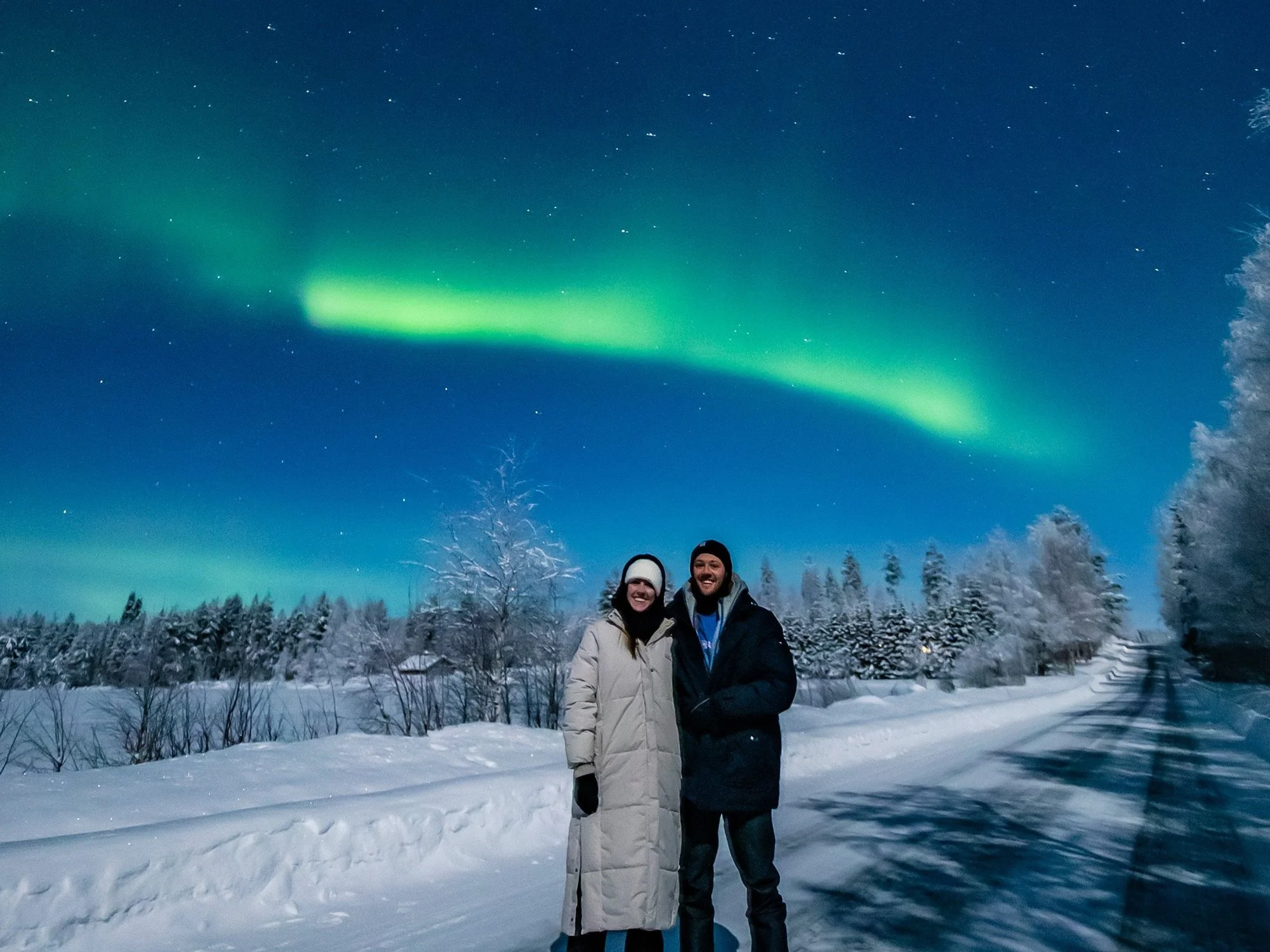Everything to consider when planning your Northern Lights holiday!
We went to Rovaniemi, Lapland in Finland in January 2024 specifically to see the Northern Lights. The Northern lights are visible in Lapland for over 8 months, from early August until late April, but there are many factors to consider when planning your trip to increase your chance of seeing this.
Things to consider when planning your trip to see the Northern Lights
Understanding the Northern Lights
The Northern Lights, also known as the Aurora Borealis, are created by charged particles from the sun colliding with gases in the Earth's atmosphere. The Northern Lights manifest as vibrant curtains, arcs, and swirls of light in the night sky. The Northern Lights are commonly green but can be radiant purples and pinks if solar activity is high. The Northern Lights peak when there are solar storms and flares. Increased activity on the sun means more particles enter the Earth’s atmosphere and there’s more Northern Light activity. In 2024, the sun is at a solar maximum and due to an auspicious solar cycle, it’s expected to increase Northern Lights activity.
Where to see the lights
The Northern Lights occur predominantly in high-latitude regions near the Arctic Circle. Common areas to see them include, Sweden, Finland, Norway, Iceland, Canada, and Alaska.
Time of year
The aurora activity is different throughout the year and peaks twice a year, in autumn and spring around the Equinox. Due to the increased activity, September, October, March & Early April are the best months for auroras. That being said, the winter months are darker and the days are shorter so you have a greater chance of seeing them. However, in November and December, Finland gets a lot of snow creating their base for the winter. During these months there’s a lot of cloud cover and snow storms so there’s decreased chances to see the lights.
Darkness
Technically, the Northern Lights are active all year but can only be seen between September - April because of the darkness. The darker and longer the night, the better chance of seeing the lights. This is why the winter months, December - February are popular aurora hunting months. They also usually peak in the early hours of the morning when it’s darker. However, we were incredibly lucky and started seeing the lights at 8:30pm. Essentially, as soon as it gets dark, keep your eyes peeled.
The Moon
Hand in hand with darkness, you want as little moonlight as possible. When planning your trip, consider the moon cycle to avoid going when it’s a full moon. A full moon will affect the intensity of the lights.
Weather
Even if the Northern Lights are ‘on’, you have to have the perfect weather conditions to be able to see them. You want clear skies and minimal wind. Although it’s hard to predict the weather in advance, you can choose months where there’s less snowfall and more stable weather conditions.
Northern Light Tours
With all this being said, the Northern Lights are very unpredictable and ultimately you’re in Mother Nature’s hands. One way to increase your chances of seeing them is to book a tour that ‘chases’ the Northern Lights. Many tours offered on platforms like 'Get Your Guide' involve visiting a designated location where you'll wait for the lights. With these tours, everything has to align and you have to have some serious luck to see the lights.
I’d recommend spending a bit more money and go on a hunting tour instead. We did a tour with Alex from Aurora Hunting who has a 95% hit rate seeing the Northern Lights. This is because he will drive anywhere, often ending up in Swedish Lapland or Norway to see the lights. You’ll provide him with the dates you’re available and he will pick the best night to see the lights. He constantly tracks the weather conditions and light activities on webcams to find the best spot and being in a car means you have the flexibility to go wherever the lights are.
His tours are in small groups of up to 8 people and can last between 5-8 hours. The cost is €250 per person and includes professional photography. If you can only see the lights with your phone you’ll only pay 50% which is a nice guarantee that he will do whatever he can so you can see the lights.
How to spot the Northern Lights
When you’re in Aurora country, you’ll notice lots of people holding their phones to the sky when there seems to be nothing there. This is because the Northern Lights are first detected by phone and look like a cloud to the naked eye. Your phone will pick up the green colours before you can see them with your eyes. Sometimes the aurora won’t get stronger and you’ll only be able to see them through your phone, but if you’re lucky, the colours will develop and you’ll start seeing the “cloud” develop to a bright green.
As they develop, start looking for “arcs”. The Northern Lights often start at arcs which are long curves across the sky. The arcs can start breaking off each other and give the effect of dancing.
Get the apps
There are plenty of good apps you should download that show the light activities and forecasts. You can also set alerts in the apps for when auroras are detected in your location.


